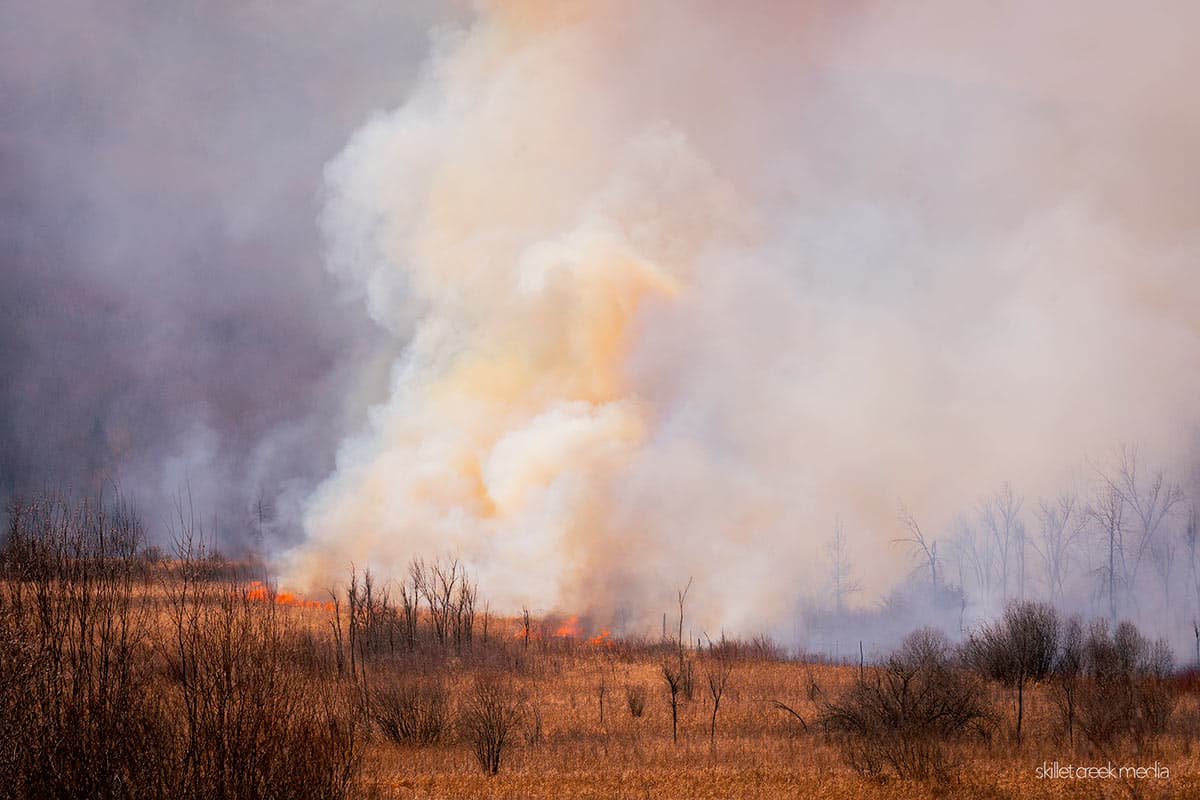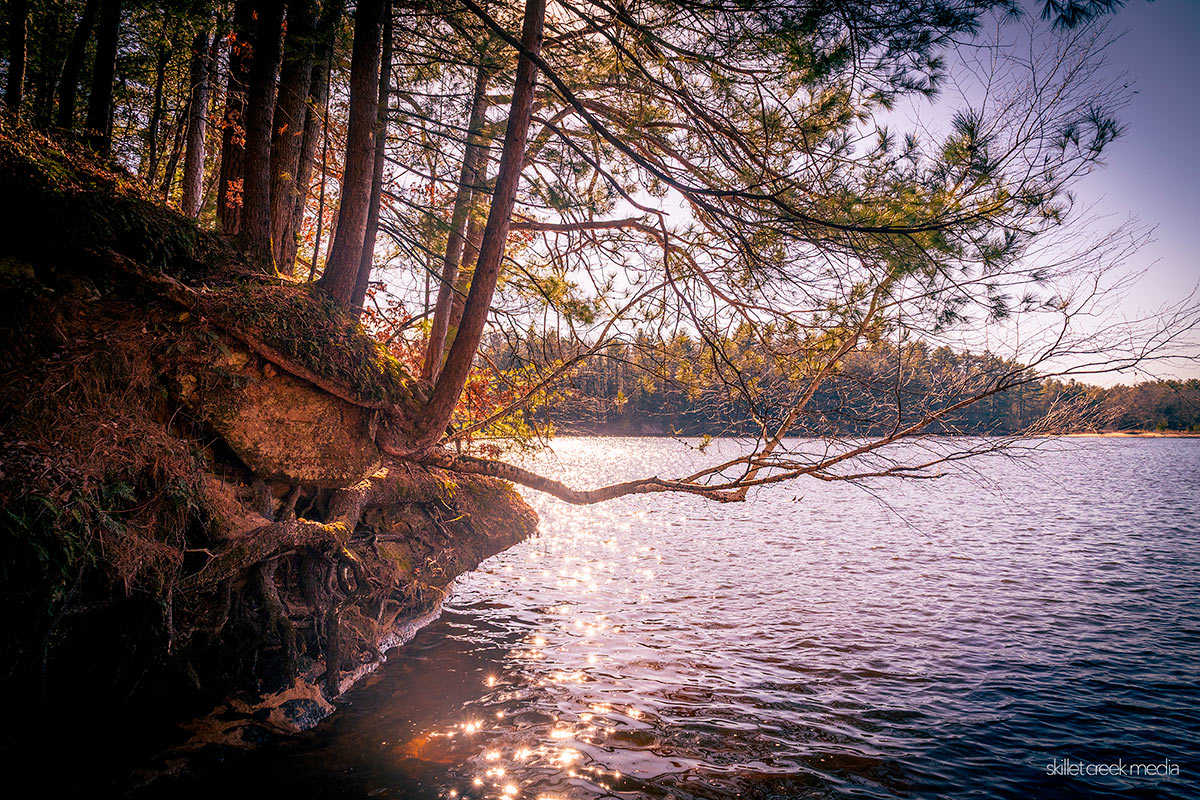Yesterday, March 18th, a prescribed burn was carried out on Devil's Lake State Park's Roznos…
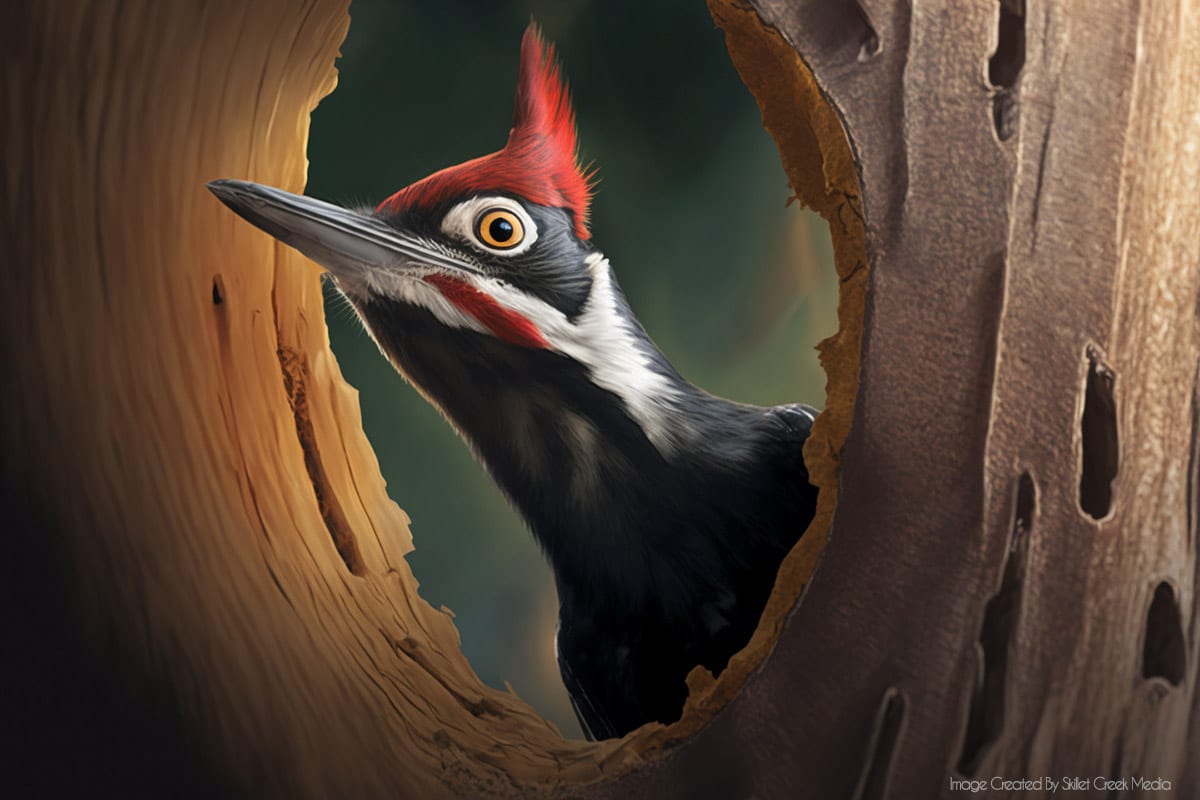
If you’ve ever hiked through Devil’s Lake State Park in Baraboo, Wisconsin, you may have heard the distinctive drumming sound of a Pileated Woodpecker. The Pileated Woodpecker is the largest woodpecker found in North America. At about 16-19 inches in length, they are a bit bigger than a crow.
These large birds are also known for their impressive tree-carving abilities, and the evidence of their work can be seen throughout the park as well.
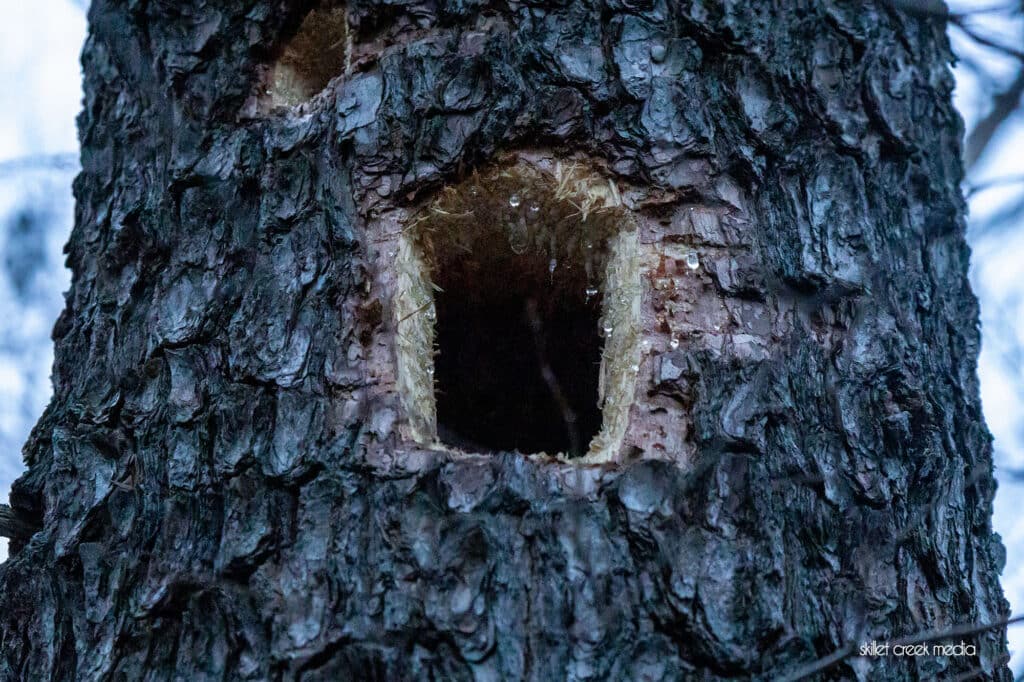
Pileated Woodpeckers use their strong beaks to create rectangular-shaped holes in trees, which they use to search for insects and larvae. These holes are often quite large and can be up to three inches in diameter, making them easily visible to the naked eye. In addition to searching for food, Pileated Woodpeckers also use these holes to create nesting sites and roosting spots.
Pileated Woodpeckers tend to seek out dead or dying trees that contain more food sources and generally do not target healthy trees. In fact, if they don’t go too crazy, their work can actually benefit the trees they choose to excavate. By removing decayed or dead wood, they promote healthy growth and prevent the spread of disease. Additionally, the holes created by their excavations provide shelter for other animals such as squirrels and owls. On the other hand, their excavations can be so extensive that they may cause small trees to break in half.
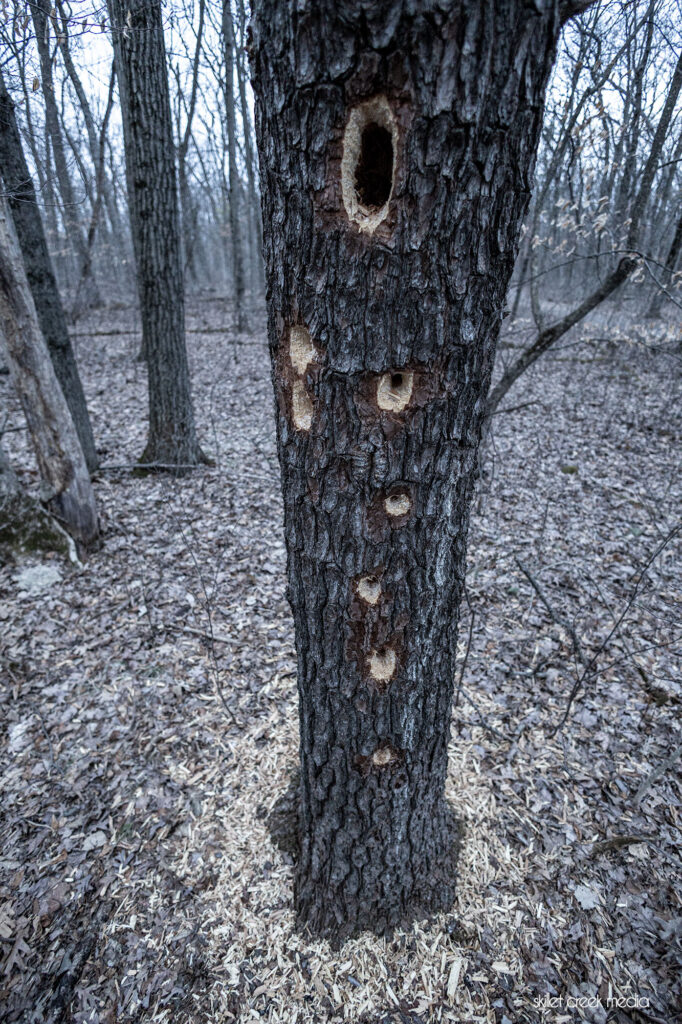
To spot evidence of Pileated Woodpecker activity, keep an eye out for trees with large rectangular holes that have been chipped away in a characteristic pattern. These holes can be found at various heights on the tree, from near the base to the top branches. You may also notice distinctive rectangular excavations on the ground beneath the tree.
If you’re lucky enough to spot a Pileated Woodpecker in action, you’ll be treated to quite a show. These birds are highly acrobatic and can often be seen clinging to the sides of trees as they search for food. They have a distinctive crest on their head, a bright red crest, and black-and-white stripes on their wings and body.
Keep your eyes peeled for evidence of Pileated Woodpecker activity on your next hike, and you just might catch a glimpse of these impressive birds in action.
Remember to always maintain a safe distance and avoid disturbing their natural habitat. Enjoy the beauty of these creatures and the park they call home.
Learn More!
Pileated Woodpecker Overview – All About Birds
Do Woodpeckers Damage Your Trees? – Penn State Extention

For nearly 2 decades the Skillet Creek blog has focused on 3 main goals; To inspire you to visit and explore the Devil’s Lake region, to help you get the most your visit by sharing tips, events, and other helpful information. Lastly to advocate for our environment & wildlife and talk about how we can keep our natural areas amazing now and into the future! That last goal can sometimes cause controversy, but it’s the only way we can accomplish the first two. – Derrick Mayoleth, Owner.

